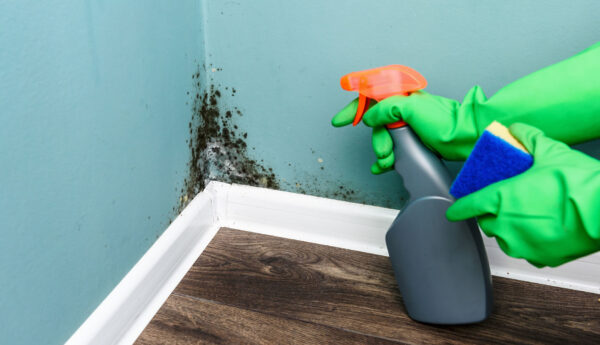Landlord-tenant disputes are unfortunate but an occupational hazard for all landlords. It’s also unfortunate that many tenancies start off really well and over time deteriorate into poor relationships for no particular reason.
I recently wrote about mould issues in rented property, what causes it and how to prevent it. So what if dispute arises? Landlord-tenant disputes are unfortunate but an occupational hazard for all landlords. It’s also unfortunate that many tenancies start off really well and over time deteriorate into poor relationships for no particular reason apart resentment coming into it, for one reason or another. As Robin Williams said in the film Dead Poets Society, “…T’was always thus, and always thus shall be!”
Relations can get very strained and when a certain point is reached, persistent rent arrears and late payments, damage to the property, or anti-social behaviour, for example, it is not unreasonable for a private landlord to start eviction proceedings. Social landlords can afford to be and usually are much more tolerant of this; private landlords usually can’t afford it.
However, tenants will sometimes bring up issues in defence against eviction. The defence can range from finding technical errors in the way the landlord has served notices, or completed court papers, to defects with the property, whether real or imagined, notified or not.
Under the present system the landlord can be faced with a defence immediately before or during a court hearing when it’s too late to do anything about it. Claims of disrepair will usually mean a deferred trail date, sometimes 6 months hence, with a request for expert reports on the conditions. The up-shot is a long and expensive legal process is in train where the loser pays all costs.
1 – When problems arise, such as rent arrears, damage to the property, introducing pets without permission etc., always contact the tenant quickly and discuss the problem.
2 – Always document these discussions and all contacts with a follow up letter outlining the details of the problem, how it is to be resolved and an agreed timescale for this.
3 – In the case of rent arrears send off a rent arrears letter, a rent schedule and serve notices s21 and s8. Try to assist the tenant in overcoming the problem short-term by helping with Housing Benefit claims and rescheduling rent payments.
4 – Try to get a reason for non-payment in writing from the tenant – this goes some way towards preventing late on “invented” reasons as a defence against eviction if it comes to that at a later date.
5 – In the case of repair issues, request access to the property for inspection and if possible have an independent expert (a builder for example) present and help you compile a report which can be compared to your ingoing inventory. Include photos if possible.
6 – In the case of condensation, evidence from previous tenants can be crucial. If they had a good experience, try to get documentary evidence from them. Think about a leaving questionnaire for all tenants.
7 – Inexpensive Temperature, Relative Humidity and Dew Points meters are now available which means landlords can quickly check room conditions and provide evidence of this.
8 – Taking meter readings can be useful to determine the amount of energy the tenant has consumed since they entered. A quick calculation can provide evidence of the average weekly consumption and therefore the heating applied.
8 – Request access to carry out necessary repairs and get them completed as soon as possible.
Documentary evidence is the key to winning any court action – judges will not take a landlord’s word against that of the tenant, so you must backup your assertions with good solid evidence. This is even more important if challenged by a tenant in view of the revenge eviction legislation included in the Deregulation Act 2015.
Revenge Evictions
The use of section 21 will be barred if a tenant reports repairs and an environmental health officer (EHO) deems the property to have serious defects – health and safety hazards, damp, condensation and mould being one of these which fall into category 1 & 2 hazards.
Really bad conditions are largely confined to a small proportion of “rogue” landlords who for the want of a better term, let slums.
But all good landlords ought to be concerned about the new rules because damp, condensation and mould is so difficult to pin down to a cause – it can just as easily be the tenant as much as the building and landlord.
Currently five restrictions or pre-conditions are imposed on the section 21 process: licencing, deposit rules, EPC, Gas Safety Certificate and serving the How to Rent Guide. For all of these the landlord is still in control – follow the rules and you retain control, that’s fair enough.
However, the retaliatory eviction rules have the potential to cause serious issues for ALL landlords if not handled correctly because:
(1) EHO judgements are can be suspect,
(2) Convincing a judge on repair issues is often challenging to say the least,
(3) Both these services are seriously under resourced and currently cause long delays – add this extra workload, which could to be substantial, and chaos will ensue,
(4) Gaining access to rented property to remedy defects is often very difficult for landlords,
(5) The process is wide-open to abuse by those tenants who wish to avoid eviction by “creating” defects of their own.
By way of example: a case cited in the Letting Update Journal (Oct 2014) was of a tenant who refused to ventilate even though the radiators were covered in wet drying clothes. The property was covered in black mould even though it had been free of condensation problems with previous tenants. The tenant violently refused to follow advice and brought in the local authority Environment Health Officer.
After the inspection the EHO came up with a long list of modifications and “improvements” that the property needed, even though it had been fully refurbished before this tenancy. The required modifications included moving radiators, building a new internal wall and replacing a large bay window.
On appeal it seems the report was modified with more emphasis placed on the tenant’s responsibility in the issue, but nevertheless it illustrates the difficulties landlords face with inexperienced EHOs, as this lady clearly was, with retaliatory eviction rules.
In my experience a large percentage of the time condensation is caused by the tenant: (1) saving on heating costs and living in a cold house, (2) not ventilating when washing and cooking, (3) drying clothes on radiators etc.
Try to convince tenants, some EHOs, some judges and the general public that this is not the landlord’s fault and you are met with pure cynicism and you really are up against a serious lack of knowledge and understanding on the issue.
I’ve seen this problem develop with tenants from all socio-economic groups, so it’s not confined to the bottom end of the letting market. But often you will never convince the tenant or the authorities of the real cause unless they are experienced or you can show that previous tenants in the property never had an issue with condensation.
My concern with the revenge eviction rules is that there is a danger of introducing a process where good landlords just cannot get fair treatment; cannot easily resolve these situations quickly when it’s costing them money in repairs / rent payment disputes, and where, given time, landlords will simply realise that letting is just not worth the hassle.







